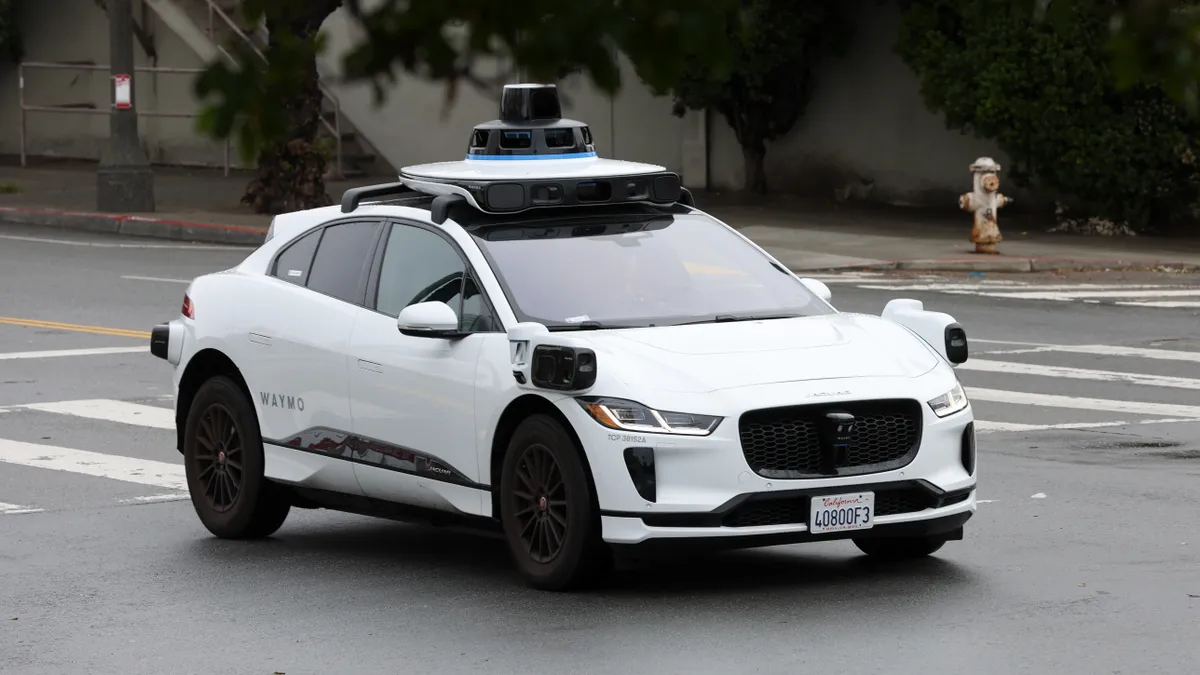This is the first in a two-part series examining the state of AV technology and its impact on U.S. cities. The next installment will look at new technologies that could make self-driving cars and robotaxis safer and more widely available.
Autonomous vehicles are either on the precipice of a technology breakthrough that could make them far safer in congested cities or years away from any meaningful development toward wider use. No clear consensus on the future of AVs exists among technologists, vehicle makers, software and hardware suppliers, and other industry experts. That could leave city and state leaders wondering how to prepare for an eventuality that may or may not happen.
The promise of cars that drive themselves while passengers watch movies, scroll their smartphones or play games has been a long time coming. A decade ago, Google co-founder Sergey Brin said that we’d be riding in self-driving cars in five years. Four years later, the former CEO of Fiat Chrysler Automobiles predicted the advent of self-driving cars within five years. And in 2019, Tesla CEO Elon Musk predicted that the company would have a million robotaxis by 2020.
But cities are the big safety challenge, explained Jay Gierak, chief marketing officer for AV technology company Ghost Autonomy. “Urban environments have a huge number of actors that are not cars. There are all different types of pedestrians and bicyclists, and those people are extremely unpredictable. It’s hard to know what they’re going to do at any given moment. Humans have done a pretty good job of intuiting how scenes evolve, and that's been pretty hard to put into a computer.”
At some scale, AVs have begun to take hold in some cities, carrying passengers or with robotic vehicles making deliveries. Waymo operates ride-hailing services in Phoenix and San Francisco and plans to enter Los Angeles soon. Cruise began operating driverless robotaxis in San Francisco earlier this year. Motional provides autonomous ride-hailing services in Las Vegas, and Lyft has operated robotaxis in Las Vegas, Miami and Austin, Texas.
This past week, Pennsylvania became the 15th state to allow the operation of AVs without a driver.
But a litany of accidents and fatalities have followed autonomous vehicles. According to Carsurance, AVs are involved in 9.1 accidents per million miles driven versus 4.1 for traditional vehicles, but the injuries are less severe in self-driving cars.
In May 2016, a Tesla Model S in “Autopilot” mode crashed into a tractor-trailer near Williston, Florida. Other examples include a March 2018 accident when a Tesla driver died in Mountain View, California, while Autopilot was in use and a Tesla Model 3 with Autopilot engaged collided with a truck in Delray Beach, Florida, in 2019, killing the driver.
The National Highway Traffic Safety Administration found that cars using self-driving technology were involved in 367 crashes from July 2021 to mid-May 2022, with Tesla vehicles accounting for 273 of those accidents. NHTSA is also investigating 830,000 Tesla vehicles equipped with Autopilot, while the company is reportedly under criminal investigation by the U.S. Department of Justice for potentially misleading consumers, investors and regulators about the capabilities of its Autopilot system.
Incidents have also come up among ride-hailing vehicles. In March 2018, an autonomous Uber vehicle struck and killed a woman crossing the road with her bicycle in Tempe, Arizona, one year after an earlier non-fatal crash. And the Cruise driverless robotaxi service in San Francisco has been involved in at least one non-fatal accident.
Against this backdrop, the industry is reassessing its multibillion-dollar investment in AV-related technologies. In October, AV technology developer Argo AI folded when its two major investors, Ford Motor Company and Volkswagen AG, walked away from further investments and wrote off a combined investment of $4.6 billion. Ford CEO Jim Farley explained the decision by saying that “profitable, fully autonomous vehicles at scale are a long way off.”
Also last month, Intel Corp. spun off its autonomous technology business, Mobileye Global, in an initial public offering for less than half the amount expected when Intel announced it last year.
“There was a lot of fanfare and hype at the outset,” said Leonard Lee, founder and managing director of NextCurve, a technology consulting firm. “Uncomfortable realities have now revealed themselves to a lot of these companies as well as investors.”
The Autonomous Vehicle Industry Association asserts that AVs can “improve public safety, enhance mobility for the elderly and disabled, reduce traffic congestion, improve environmental quality, advance transportation efficiency and spur growth in the U.S. economy.” Jeff Farrah, newly appointed executive director of the AVIA, said, “The first thing that I want city leaders to know is that our belief is that AVs can be a tremendous solution for a lot of the issues that the cities are confronting.”
In the labs of software and hardware developers, new semiconductors, neural networks and artificial intelligence show promise in helping self-driving cars make better, faster decisions. “This is an incredibly ambitious industry,” Farrah said.
Visionaries see major advances in the next five years that could solve some of the safety issues that AVs have struggled with, potentially enabling self-driving cars to live up to their promise.




















